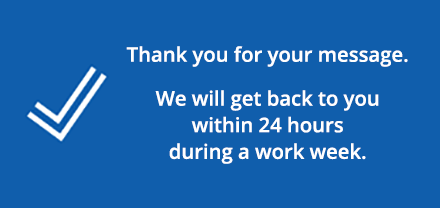Blog Post:
How to identify the best social media platforms for your brand
In today’s dynamic cyberspace, establishing a successful social media presence for your brand, products and services is essential. Social media platforms are aplenty, and many share common features. However, each platform comes with its unique set of objectives, formats, and target audiences. That’s why it’s crucial to identify the most suitable platform for your brand.
That’s why I’ve put together a step-by-step framework that empowers marketers to navigate the exciting and ever-changing world of social media. Follow this comprehensive approach to identify the optimal platform to showcase your brand, effectively engage with your target audience, and ultimately maximize the impact of your social media marketing endeavors.
Step 0. Define marketing objectives
Before starting with the steps outlined in the framework, it’s a good idea to revisit the drawing board to define and document your marketing objectives. Marketing objectives can differ based on various factors like industry, product, service, brand positioning, target audience, and overall business goals. To help you get started, our Social Insights experts have compiled a list of objectives for you to consider:
✓ Elevate sales ✓ Drive engagement
✓ Create awareness ✓ Improve customer loyalty
✓ Enter new markets ✓ Increase customer satisfaction
✓ Expand market share ✓ Launch a new product or service
✓ Generate leads ✓ Solidify brand positioning
After identifying your objectives, the next step is to gain a comprehensive understanding of the capabilities offered by each social media platform out there.
Step 1. Evaluate platforms to match your objective
Understand and assess the available social media platforms, including their features, user behavior, strengths, and shortcomings, while identifying alternatives that address these weaknesses. To make it a little easier for you, we’ve broken down the top seven social media platforms:
A primarily visual platform focused on sharing photos and videos. Instagram is used for personal creative expression, sharing memories and special moments, and building an online identity. Mainly millennials are active on this platform.
A video-sharing platform that allows users to upload, watch, and interact with videos. These videos consist of educational, entertaining, informative content. All age groups are active on this platform.
A versatile social networking platform driving personal connections, content sharing, and business engagement. Mainly millennials and Gen X are active on this platform.
A visual discovery platform centered on sharing and organizing images and ideas. It is used for inspiration, planning, and exploring new trends. Female millennials and Gen X are mostly active on this platform.
A professional networking platform for career development, networking, and business-related activities. All age groups are active on this platform.
A real-time update platform known for its rapid communication and concise format. It is used to stay up to date with trending topics. Male millennials and Gen X are mostly active on this platform.
A video-based platform that allows users to create and share creative and entertaining videos with a wide range of audio effects, filters, and editing tools. TikTok is known for its diverse community and its enablement of viral social trends and challenges across various content genres. Gen Z dominates this platform.
Once you understand the essence of each social media platform, the next step is recognizing whether it is suitable for your audience. This brings us to step 2.
Step 2. Connect with the right target audience
Cross-evaluate the demographics and preferences of your target audience. Identify the platforms on which your audience is most active and engaged, and ensure your brand communications resonate with them effectively. Make it a point to stay abreast with new features and additions to platforms, as these ultimately impact the user landscape. Keeping up with the ever-evolving social media landscape is easier said than done, so we encourage you to reach out to us for updates, changes, and new opportunities.
Due to the industry’s rapid progress, providing a snapshot of the current social media ecosystem would likely be outdated when you read this after publication. Nonetheless, we aim to offer components for your analysis.
Write down the details of your target audience in segments. You can consider age, gender, occupation, lifestyle, values, interests, and purchase habits. Based on these categories, you’ll be able to identify preferences and needs. You can then match the right social media platforms to the right consumer base and tailor your messaging with unique communication styles. This will come together strongly with platform suitability.
Step 3. Evaluate platform suitability
Once you have a clear understanding of your audience and platform options, evaluate the suitability of each platform in relation to your brand, product, and/or service. Consider factors such as platform functionality, content format compatibility, and strategic fit. We have created a worksheet for you to start strong and gain valuable insights into each platform’s distinctive characteristics.

As demonstrated by the table, some platforms have overlapping features. It should also be noted that some platforms’ purposes can evolve over time as new trends emerge and new features are added. Having a strong brand identity is key to ensuring flexibility and an agile approach to your social media marketing strategy.
For instance, you can reduce wasted efforts on channels that are unlikely to reach your desired audience. Once you have identified the right platforms, you can decide on the types of posts, such as organic posts, paid ads, and/or influencer collaborations.
Your work doesn’t stop there. Experimentation and continuous analysis of performance are needed to optimize your strategy, leave lasting impact, and set yourself up for long-term success. We’ll leave you with five bonus tips to achieve this:
1. Evaluate competition to identify your differentiating factor(s) and stay ahead of the curve.
2. Use consistent language for a recognizable brand persona.
3. Follow industry trends for a competitive advantage.
4. Leverage analytics to determine and optimize the most effective content.
5. Stay flexible and update your strategies to keep pace with your audience.
Need a hand with making the most out of social media? Reach out to one of our experts today.
MetrixLab operates a Social Insights Privacy Policy, which takes into account the privacy of people publishing content online.









